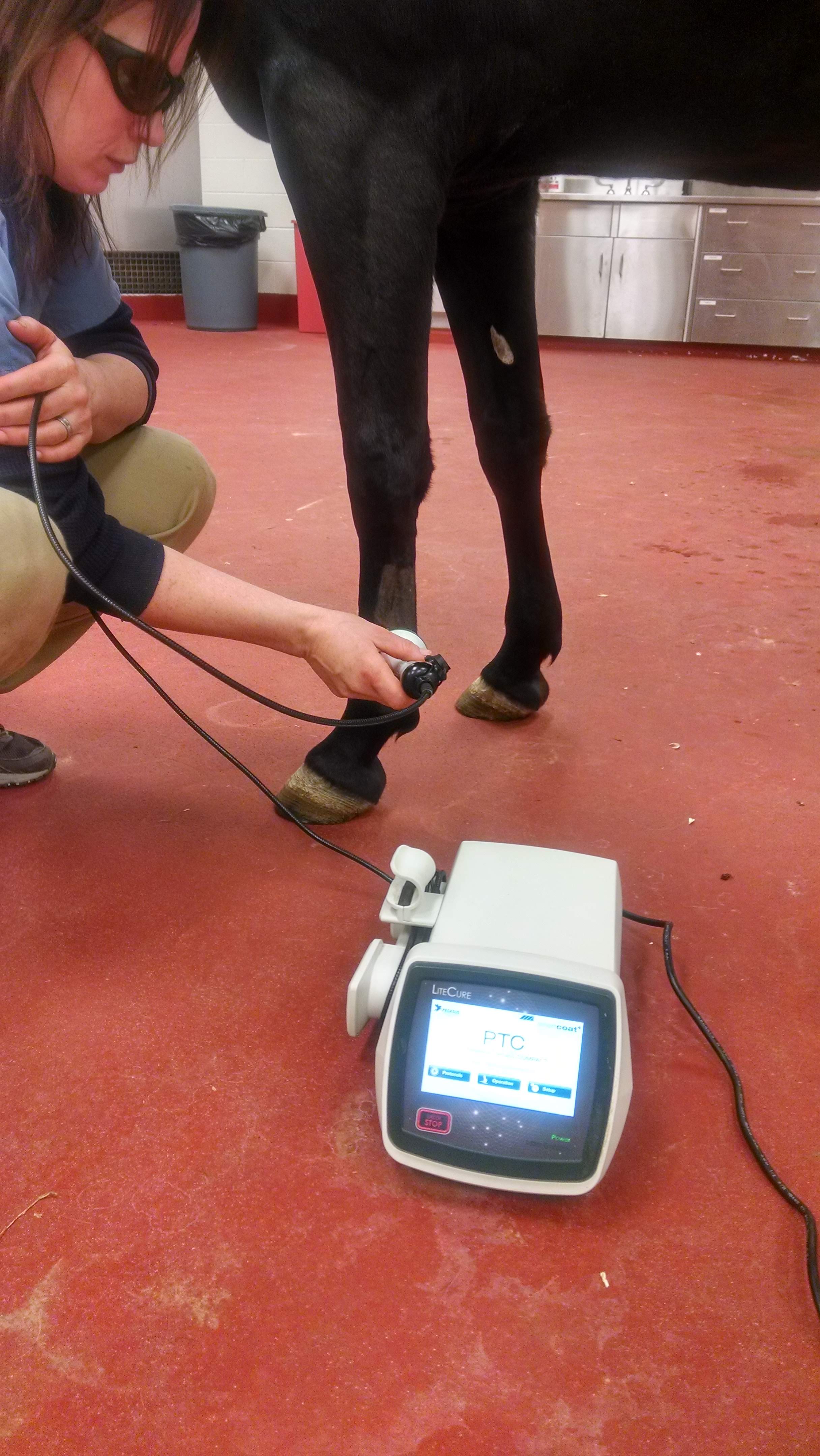Exploring the Holistic Approach of Equine Therapy for Individual Development
Exploring the Holistic Approach of Equine Therapy for Individual Development
Blog Article
Examining the Effectiveness of Laser Treatment in Equine Therapy for Injury Rehab
The analysis of laser therapy's efficiency in equine injury recovery pivots on several variables, consisting of recovery time, pain reduction, and cells regrowth. Veterinarians frequently observe remarkable end results with laser treatment contrasted to conventional methods, positioning it as a critical element in equine care. Equine Therapy.

Understanding Laser Therapy
Laser therapy has become a pivotal device in veterinary medication, specifically in the therapy of equine problems. Recognized for its non-invasive nature and efficiency, laser treatment includes the application of certain wavelengths of light to boost cells repair service and minimize swelling. This restorative technique is increasingly favored for its capacity to speed up the healing process in horses dealing with a selection of bone and joint injuries and chronic conditions.
The primary mechanism behind laser therapy is its capacity to boost cellular features. When laser light permeates the skin, it is soaked up by mitochondria, the giant of cells, which leads to boosted production of adenosine triphosphate (ATP) This biochemical energy boost helps with cellular repair service and regeneration. In addition, laser treatment advertises vasodilation, enhancing blood circulation and oxygen delivery to broken tissues, therefore speeding up recovery.
In equine medicine, laser treatment is particularly valuable for conditions such as tendonitis, osteo arthritis, and injury healing. The method is admired for its pain-relieving buildings, allowing equines to regain movement and feature more quickly. Vets additionally appreciate its marginal negative effects compared to various other therapy modalities, making it a trustworthy and secure option for equine care.
Just How Laser Treatment Works
To comprehend exactly how laser treatment functions, it is necessary to look into the communication between light energy and biological tissues. Laser therapy, likewise referred to as Low-Level Laser Treatment (LLLT) or photobiomodulation, employs specific wavelengths of light to permeate tissues and promote mobile procedures. The device pivots on the absorption of photons by cell chromophores, primarily within the mitochondria, which are crucial for energy manufacturing.
Upon absorption, these photons trigger a series of biochemical modifications, boosting mitochondrial feature and resulting in boosted adenosine triphosphate (ATP) manufacturing. This rise in ATP accelerates cellular metabolic process, advertising cells repair service and regrowth. In addition, laser therapy modulates inflammatory responses by affecting cytokine levels and lowering oxidative stress, thus relieving pain and swelling.
Another considerable aspect of laser treatment is its function in enhancing microcirculation. The treatment promotes vasodilation, improving blood circulation and oxygen delivery to broken tissues. This promotes the removal of cellular particles and supports the spreading of fibroblasts and collagen synthesis, important for wound recovery.
Clinical Proof
The effectiveness of laser therapy in equine treatment has actually been validated with numerous clinical research studies, showcasing its healing possible across a variety of problems. A study conducted by Turner et al. (2012) demonstrated that steeds treated with low-level laser treatment (LLLT) for tendon injuries showed accelerated recovery compared to those getting traditional therapies.
Similarly, research by Johnson and coworkers (2015) concentrated on equine muscle injuries, revealing that laser therapy significantly sped up muscle mass fiber regeneration and reduced muscle mass stiffness. These findings More Bonuses were proven by histological evaluations revealing enhanced muscle cells company. Furthermore, professional evaluations have actually shown that laser therapy can reduce chronic conditions such as osteoarthritis. A research by Smith et al. (2018) reported that equines with osteoarthritic joints experienced remarkable pain alleviation and boosted variety of motion complying with a program of laser treatment sessions.
Veterinarian Insights
Vet professionals have actually significantly acknowledged the worth of laser therapy in equine treatment, mentioning both empirical evidence and direct experience. Dr. Jane Smith, a leading discover here equine vet, keeps in mind that laser therapy has actually revealed exceptional effectiveness in lowering swelling and speeding up tissue fixing.
Vets also appreciate the flexibility of laser treatment. It can be utilized for a wide variety of problems, from shallow wounds to much deeper bone and joint injuries. Dr. Emily Brown highlights its utility in treating problems like tendonitis and osteo arthritis, where conventional treatments commonly fall brief. She mentions that laser therapy can be customized to the certain demands of each steed, making sure ideal outcomes.

Practical Factors To Consider
A key element of applying laser therapy in equine treatment entails understanding the practical considerations that guarantee its efficiency and security. It is essential to choose the ideal laser tool, as numerous kinds differ in wavelength, power, and penetration depth (Equine Therapy). Vets must be skilled in these specifications to tailor treatment procedures successfully to every injury kind
Furthermore, the regularity and period of laser therapy sessions require careful planning to optimize healing benefits while minimizing any possible negative web link effects. Consistent monitoring of the horse's action to therapy can guide necessary adjustments in the therapy routine. Establishing a risk-free and regulated atmosphere during treatments is also vital to stop unexpected direct exposure to laser exhausts, which can harm both the steed and the trainer.
Educating and qualification of personnel carrying out laser treatment are paramount to ensure appropriate method and to promote safety and security requirements. In addition, preserving exact documents of each session, including laser setups and observed outcomes, is important for evaluating the general effectiveness of the therapy and for making data-driven choices.
Conclusion
Laser treatment has actually emerged as a reliable method in equine injury rehabilitation, using substantial advantages in healing time, pain relief, and cells healing. For optimal results, continual surveillance and customized therapy procedures remain important in leveraging the full possibility of laser therapy in equine treatment.
Report this page